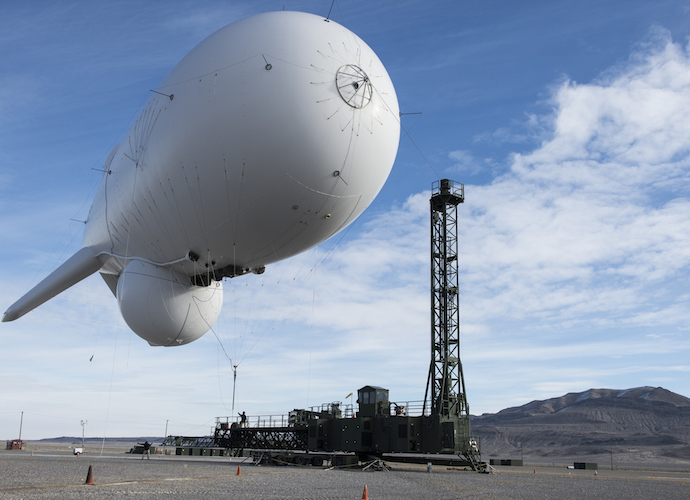Untethered Military JLENS Blimp Lands In Pennsylvania
The military blimp that became unmoored from its location in Edgewood, Md., landed in Central Pennsylvania Wednesday after spending more than four hours on the loose.
Military JLENS Blimp Lands
At about noon Wednesday, the U.S. Army Joint Land Attack Cruise Missile Defense Elevated Sensor System (JLENS) became untethered from its mooring at Aberdeen Proving Ground. The 243-foot-long aerostat subsequently traveled 160 miles, its 6,700 feet of cable taking down power lines in its wake.
After the blimp became unmoored, F-16 fighter jets were deployed into the sky to monitor the unmanned aircraft.
“Anyone who sees the aerostat is advised to contact 911 immediately,” Aberdeen Proving Ground spokeswoman Heather Roelker said while the blimp was still airborne. “People are warned to keep a safe distance from the airship and tether as contact with them may present significant danger.”
The blimp ultimately landed near Moreland Township, Pa., after slowly losing helium. It then began to deflate.
“[The blimp] is mostly deflated and located in the vicinity of Moreland Township, Pennsylvania,” NORAD said in a statement Wednesday night. “Local authorities are securing the area and there is a military recovery team en route.”
Raytheon, the company that produces the JLENS aircraft, had previously posted to its website that the chances of such a blimp becoming unmoored and taking an unmanned flight were “very small.”
“The chance of that happening is very small because the tether is made of Vectran and has withstood storms in excess of 100 knots,” the Raytheon post states. “However, in the unlikely event it does happen, there are a number of procedures and systems in place which are designed to bring the aerostat down in a safe manner.”
The JLENS blimp that has been recovered is one of the two blimps that were launched over Middle River in December. They float 10,000 feet in the air and are as long as football fields. The aircrafts boast the capability to use radar to see ships, aircrafts, incoming cruise missiles and other threats up to 340 miles in any direction.
NORAD has spent $2.7 billion and 17 years of research working on the JLENS. The blimps’ effectiveness is currently being tested in the National Capital Region.
RELATED ARTICLES
Get the most-revealing celebrity conversations with the uInterview podcast!




 Click here for the Best Celebrity Bikini Bodies Slideshow
Click here for the Best Celebrity Bikini Bodies Slideshow




Leave a comment